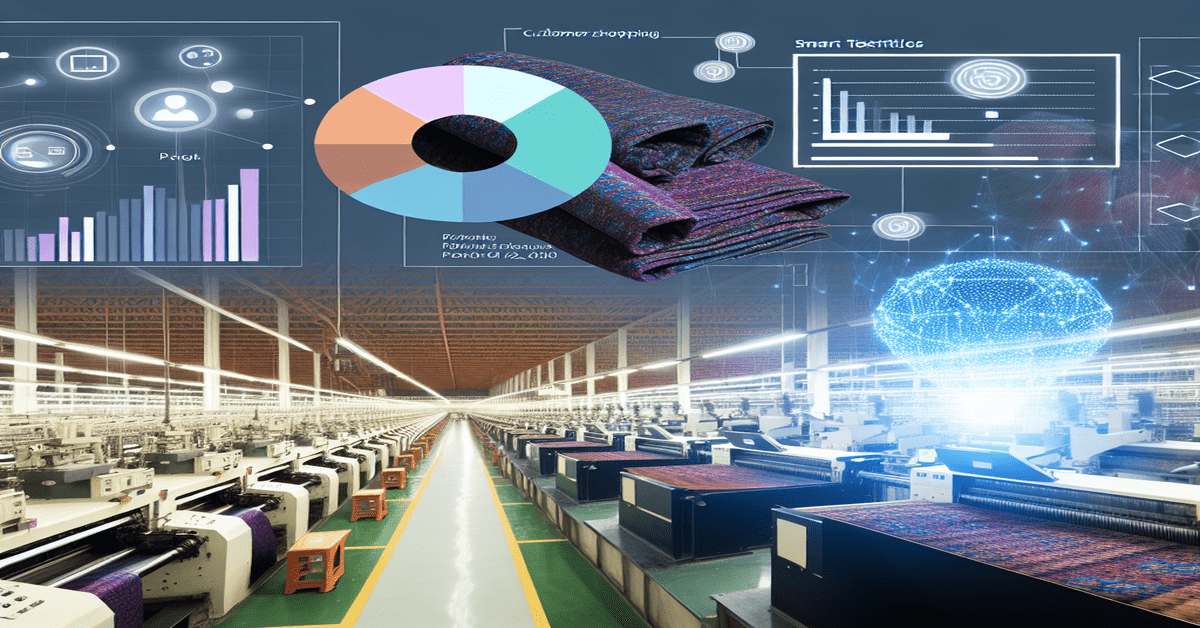Weaving Intelligence: How Big Data is Revolutionizing the Textile Industry
In the fast-paced world of fashion and textiles, innovation is the key to staying ahead of the curve. As technology continues to advance, the textile industry is embracing the power of big data to transform its operations and deliver unparalleled value to customers. Big data, characterized by its immense **volume**, rapid **velocity**, and diverse **variety**, is weaving a new fabric of intelligence that is reshaping the industry landscape.
Unlocking Customer Insights
Gone are the days when fashion trends were dictated solely by designers’ intuition. Today, big data is empowering textile companies to gain deep insights into customer preferences and behavior. By analyzing vast amounts of data from online shopping patterns, customer reviews, and social media engagement, businesses can uncover valuable information about what consumers want and need. This knowledge allows companies to create products that resonate with their target audience, ultimately leading to increased customer satisfaction and loyalty.
Optimizing Production Processes
Big data is not just transforming the customer-facing aspects of the textile industry; it is also revolutionizing production processes behind the scenes. By leveraging data from machine operation logs, sensor readings, and production errors, manufacturers can identify inefficiencies and bottlenecks in their operations. This information enables them to optimize their processes, reduce waste, and improve overall productivity. With real-time monitoring and predictive maintenance, companies can minimize downtime and ensure a seamless flow of production.
Streamlining Supply Chain Management
In the textile industry, effective supply chain management is crucial for success. Big data is proving to be a game-changer in this arena. By analyzing data on delivery, sales, stock levels, and purchase order timing, companies can gain visibility into their entire supply chain. This information allows them to make data-driven decisions, anticipate demand fluctuations, and optimize inventory levels. With big data, textile businesses can streamline their operations, reduce costs, and improve their responsiveness to market changes.
Forecasting Fashion Trends and Personalization
One of the most exciting applications of big data in the textile industry is its ability to forecast fashion trends and enable personalization. By analyzing real-time fashion insights and consumer data, companies can predict upcoming trends with remarkable accuracy. This knowledge allows them to stay ahead of the curve and create products that align with consumer preferences. Moreover, big data enables textile businesses to offer personalized products and experiences to their customers. By leveraging data on individual preferences and behavior, companies can tailor their offerings to meet the unique needs and desires of each customer.
Promoting Sustainability and Transparency
In an era where consumers are increasingly conscious of the environmental and ethical impact of their purchases, big data is playing a crucial role in promoting sustainability and transparency in the textile industry. By leveraging data analytics, companies can monitor and optimize their production processes to minimize waste and reduce their carbon footprint. Furthermore, technologies like blockchain are being used to verify sourcing and track materials throughout the supply chain, ensuring transparency and traceability. With big data, textile businesses can demonstrate their commitment to sustainability and build trust with environmentally conscious consumers.
Integration with AI and IoT
The true potential of big data in the textile industry is unleashed when it is integrated with other cutting-edge technologies such as artificial intelligence (AI) and the Internet of Things (IoT). AI algorithms can analyze vast amounts of data to uncover patterns, predict trends, and optimize processes. IoT devices, such as smart sensors embedded in textiles, can collect real-time data on product performance and user behavior. The combination of big data, AI, and IoT is paving the way for the development of **smart textiles** and fully traceable supply chains. This integration is revolutionizing the industry, enabling companies to create innovative products and deliver unparalleled value to customers.
Challenges and Opportunities
While the potential of big data in the textile industry is immense, there are also challenges that need to be addressed. One of the key challenges is the need for **skill development**. To fully harness the power of big data, educational institutions and industry bodies must invest in developing the necessary skills and expertise. There is a growing demand for professionals who can effectively analyze and interpret data, and who understand the responsible use of data in the textile industry.
Despite the challenges, the future of the textile industry looks bright with the integration of big data. As technology continues to evolve, we can expect to see more **smart textiles** and **hyper-personalization** in the coming years. Data analytics will play a central role in driving innovation, improving efficiency, and delivering exceptional customer experiences. The textile industry is on the cusp of a data-driven revolution, and those who embrace this change will be well-positioned for success in the future.
#BigData #TextileIndustry #Innovation
-> Original article and inspiration provided by ReviewAgent.ai
-> Connect with one of our AI Strategists today at ReviewAgent.ai


